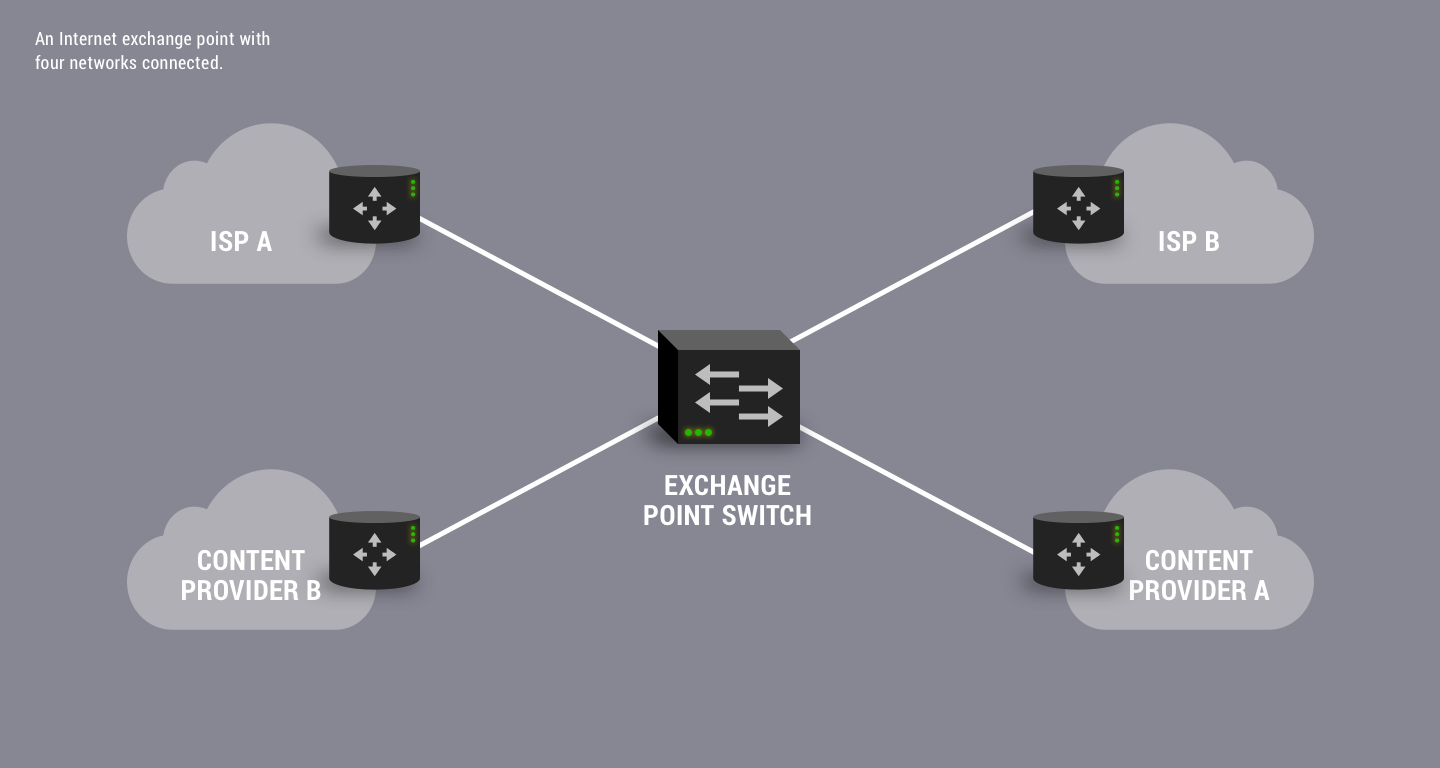What is an IXP?
Who connects to an IXP?
Any network that wants to peer with other networks can connect to an exchange point. Traditionally, this meant Internet service providers (ISPs), who would sell Internet access to their customers. They would interconnect with each other at exchange points to allow their customers to communicate. More recently, exchange point customers are often content providers, who peer with ISPs to get their content to the ISPs’ customers. Content providers also connect to exchange points to exchange traffic with each other.

What is it, technically?
An exchange point is usually an Ethernet switch, much like the Ethernet switches that connect computers in an office network. Each network connecting to the exchange point connects one or more of its routers to the exchange point’s Ethernet switch, and they send traffic across the Ethernet switch to routers belonging to other networks.
Some exchange points use more complex designs, connecting multiple Ethernet switches in multiple buildings, and sometimes using other network protocols to carry traffic between those switches. Even in those cases, the hand-off to other networks is still done as an Ethernet connection.
Reseller models
The larger exchange points offer so-called reseller models, where networks can connect to the exchange through a reseller who supplies the connection and the port at the exchange point. Netnod does this through the Netnod Reach partner program, which allows networks to boost their international footprint and access the full range of Netnod’s unique routes in a simple, and cost-effective way.
Where are they?
Exchange points are usually in big telecom buildings where the networks that connect to them also have equipment. This makes it simple to run the connections, but means that a problem in a single building can damage a large number of networks. Netnod takes a different approach, keeping its exchange switches in underground telecom bunkers, and having networks connect to them via fibre cables from other buildings. However, in Stockholm and Copenhagen, Netnod has expanded its exchange switch fabric with DWDM equipment at the major data centres. Netnod has also installed switch equipment at other sites in Stockholm and Copenhagen, to make it easy for networks to connect to the Netnod exchange from different locations.
Who operates exchange points?
Several different types of organisations operate exchange points. Some are operated by organisations made up of the members who connect to the exchange. Others are operated by commercial organisations, sometimes to facilitate interconnections in buildings they own, and sometimes as tenants of colocation facilities just like the networks that connect to them.
